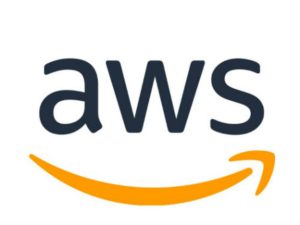This blog post is an excerpt from our recent event booklet “Why Government Needs a Holistic Approach to IT Modernization.” To download the full resource for free, head here.
The first step to IT modernization might not be an addition to tech portfolios or a big-money program. Instead, agency personnel – and just as importantly, agency leadership – must recognize that IT modernization isn’t a choice; it’s necessary to deliver services going forward.
Employees are being asked to do more and more with existing legacy systems. Disruption is needed, and end users of IT systems know it better than anybody.
“It’s the same problems everyone else has – old systems, old processes,” Michael McFarland, Director of Acquisition Business Systems for the Health and Human Services Department (HHS), said of the challenges that crop up at HHS.
In government, however, inertia often wins the day. For every subset of the workforce that’s ready for new systems, an opposing force resists change. At the IT modernization roundtable, several employees across different levels of government suggested one of those primary departments that proves to be a roadblock is IT, where employees are often familiar with a particular set of solutions and hesitant to pick up anything that would fundamentally change the shape of their work.
“The words that kill a lot of things are: ‘This doesn’t fit our architecture,’” McFarland said.
One attendee, an engineer from a mid-sized state agency, said it was too difficult to get things done by going through IT. “They never have time. They don’t listen to what you say,” she said. Expressing the inefficiency, she used the analogy that IT wanted her to travel by donkey instead of by airplane.
Many attendees at GovLoop’s IT modernization roundtable expressed the same frustration with their IT departments. They suggested IT departments halted new projects and slowed progress out of technical, procedural concerns instead of considering big-picture gains that new technologies, systems and processes could bring into the fold.
Employees who went to the event considered potential fixes. An employee of a small federal agency proposed that the only way to get through to IT was to work around the department entirely.
“It’s almost to where you have to circumvent the existing IT teams, particularly the ones who resist change, because they hang on to the servers,” that employee said.
This approach, known in some corners as “shadow IT,” is one that many in the room nodded their heads in agreement with and found to be effective.
To actually bypass IT requires a concerted effort and a lot of support from the top and around the agency. Leadership and procurement would have to OK the purchase of a new system and plan to phase out an old one without going through IT checks or reviews. Once the system was in place, IT would have to “deal with it.”
Even if effective, that approach might not be feasible in most government environments, as it requires widespread support and constructs a very adversarial base for future relationships with IT. Another approach, however, has been effective in HHS and GSA.
“Just start with a small little pilot,” McFarland said. “Who has issue with that? And then you start showing value, and as people start to see value…it builds momentum.”
These pilots, which often can take just $50,000 of seed money, are important mechanisms for agencies to test value and foster support for solutions before going all in on a divisive system. Pilots can foster support from all corners, even IT.
At HHS, Jose Arrieta joined the staff from GSA with a pilot idea to modernize the acquisition system by tracking inputs and, in the future, automating contracts using blockchain technology. When GovLoop spoke with him in January 2019, he praised leadership for providing the support.
The pilot became an official program, earmarked for 896% return on investment, and Arrieta became the chief information officer (CIO) for HHS. The program could revolutionize contracts and is on course to save HHS tens of millions of dollars.
Tips for Innovators
• Begin with a small pilot program.
• Stoke support from a single member in every team, and present the business case to leadership, without focusing on technicalities.
• Start with a small but meaningful system and try to expand the pilot over time.







Leave a Reply
You must be logged in to post a comment.